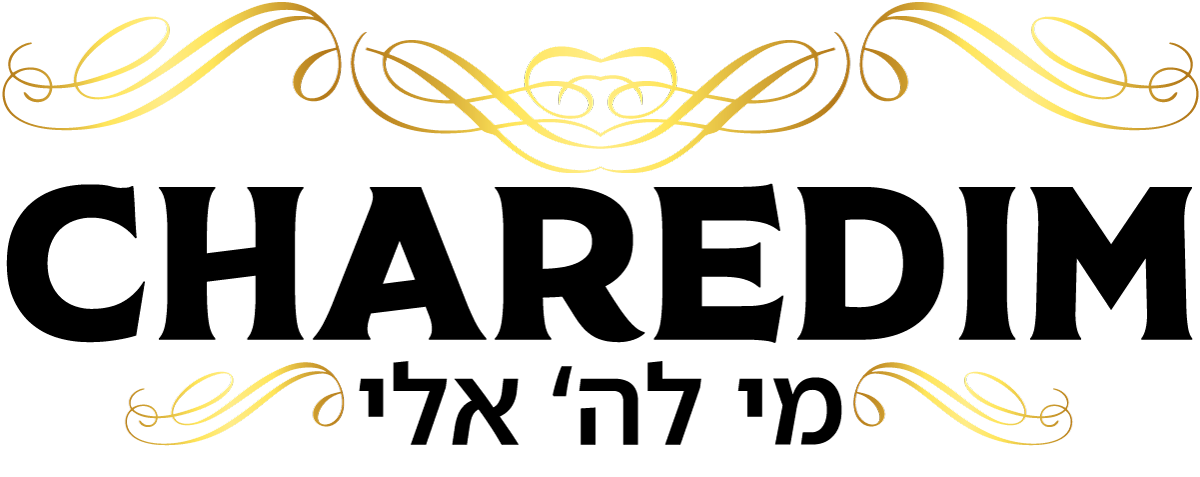What Do Charedim Think of the Israeli Flag and National Anthem?
For many Jews, the blue-and-white flag and the anthem HaTikvah stir deep emotions—expressions of Jewish pride, survival, and national identity. But when these symbols are met with coolness or even rejection in Charedi neighborhoods, it raises a question: Why don’t Charedim relate to these symbols the same way?
Is it simply politics?
Or is there something deeper—rooted in Torah, history, and worldview?
Let’s begin with the flag.
The Israeli Flag: A Secular Symbol in Holy Clothing?
From a Torah perspective, a symbol only has value if it reflects Torah values.
The Israeli flag, designed in the late 1800s by secular Zionists, was modeled on a tallis—but its creators didn’t see it as a symbol of mitzvah or avodas Hashem. Rather, it was a modern national emblem meant to represent a state like all other nations (see I Shmuel 8:5). Its adoption had no connection to halacha, no approval from Gedolim, and no connection to our mesorah of what a flag of Klal Yisrael should be.
In fact, one of its early designers, David Wolffsohn, wrote:
“We have no flag... So I used a tallis and placed a Magen David in the center. That is our flag.”
But turning a tallis into a nationalist flag doesn’t make it a holy object. The Torah doesn’t create kedushah through symbolism alone—it must come with sanctity, halachic intent, and Hashem’s Will.
This is why Rav Yosef Chaim Sonnenfeld zt”l and other Gedolim in pre-State Yerushalayim refused to hang the Zionist flag in their institutions. To them, it was not a symbol of redemption—but of a movement that sought to replace Torah with nationalism.
The Chazon Ish zt”l, Rav Elchonon Wasserman zt”l, Rav Aharon Kotler zt”l, and many others saw the flag not just as non-religious, but as a competing identity—one that could slowly pull Jews away from their primary identification as ovdei Hashem, not citizens of a secular state.
The Ponevezher Flagpole: A Misunderstood Symbol
One of the most famous Charedi flag stories is that of the Ponevezh Yeshiva in Bnei Brak, where a national flag is raised every year on Yom HaAtzmaut.
Some take this to mean the Charedim have accepted the flag after all.
But here’s the full story:
The Ponevezher Rav, Rav Yosef Shlomo Kahaneman zt”l, was a Torah giant who had survived the horrors of the Holocaust and came to Eretz Yisrael to rebuild. He believed in reclaiming kedushah wherever it had been lost. His goal in raising the flag wasn't to endorse the secular Zionist ideology—but to prevent the flag from becoming a symbol only of secularism. He was making a powerful statement: “If there will be a Jewish flag, it belongs to Torah too.”
Yet this was a minority approach. Most Gedolim of the generation disagreed, not because they didn’t value Jewish return to the land—but because they feared that external symbols would replace Torah substance, and lead to deep confusion.
HaTikvah: A National Anthem Without Hashem
Now let’s turn to HaTikvah, the Israeli anthem.
It speaks of “a Jewish soul yearning” and “hope not yet lost”—but it makes no mention of Hashem, of Torah, or of redemption through Mashiach. The anthem was written by secular Jews who were inspired by European romantic nationalism, not the vision of Yeshayahu, Yirmiyahu, or the Rambam.
The yearning of Torah Jews has always been clear:
“ותחזינה עינינו בשובך לציון ברחמים” “Let our eyes behold Your return to Zion with compassion.”
The tikvah we sing about is not a Jewish state—but the rebuilding of the Beis HaMikdash, the return of the Shechinah, and the ingathering of all Jews under the banner of Torah and malchus Beis Dovid.
To many Charedim, singing HaTikvah instead of those tefillos feels like swapping eternal hopes for temporary slogans.
Does This Mean Charedim Hate Symbols of Israel?
Not at all.
Charedim love Eretz Yisrael deeply. They love every stone of Yerushalayim, every mitzvah tied to the land, and every Jew who walks its streets. But they do not believe that modern nationalism equals Geulah—and they are cautious of symbols that blur the line between secular identity and Torah destiny.
This is why many Charedim refrain from saluting the flag, do not sing HaTikvah, and avoid participation in official State ceremonies—not out of hatred, but out of a deep desire to remain loyal to the eternal vision of Torah.
Conclusion: The Flag and Anthem Are Not Our Core Identity
A flag is a piece of cloth.
An anthem is a poem with music.
But Torah? Torah is our soul. It is our guide, our glory, and our truth in every generation.
Charedim choose to identify first and foremost as servants of Hashem, loyal to the mesorah of Har Sinai, and longing not for a political state—but for the full Geulah Sheleimah, when all Jews will be united under Hashem’s Kingship.
Sources & Footnotes
- Koheles 8:1 – “Chochmas Adam Ta’ir Panav” – The face shines with Torah wisdom.
- Rambam, Hilchos Talmud Torah 5:1 – Characteristics of a true Torah sage.
- Avos 1:1 – Moshe received the Torah at Sinai and transmitted it.
- I Shmuel 8:5 – “Place a king over us like all the nations.”
- Michtavim u’Maamarim, Rav Shach zt”l – Opposition to Zionism’s ideology.
- HaTekufah HaGedolah, Rav Elchonon Wasserman zt”l – On Zionism and secular nationalism.
- Shivchei HaChazon Ish – Views on the flag and secular symbols.
- Rabbi Jonathan Rosenblum’s Reclaiming the Flag (Mishpacha, 2016) – Overview of Ponevezher Rav’s flag story.
- Rav Yosef Chaim Sonnenfeld, Shailos U’Teshuvos Salmas Chaim – Refusal to endorse Zionist symbolism.
- HaTikvah origins – Written by Naftali Herz Imber, influenced by 19th-century European nationalism.
